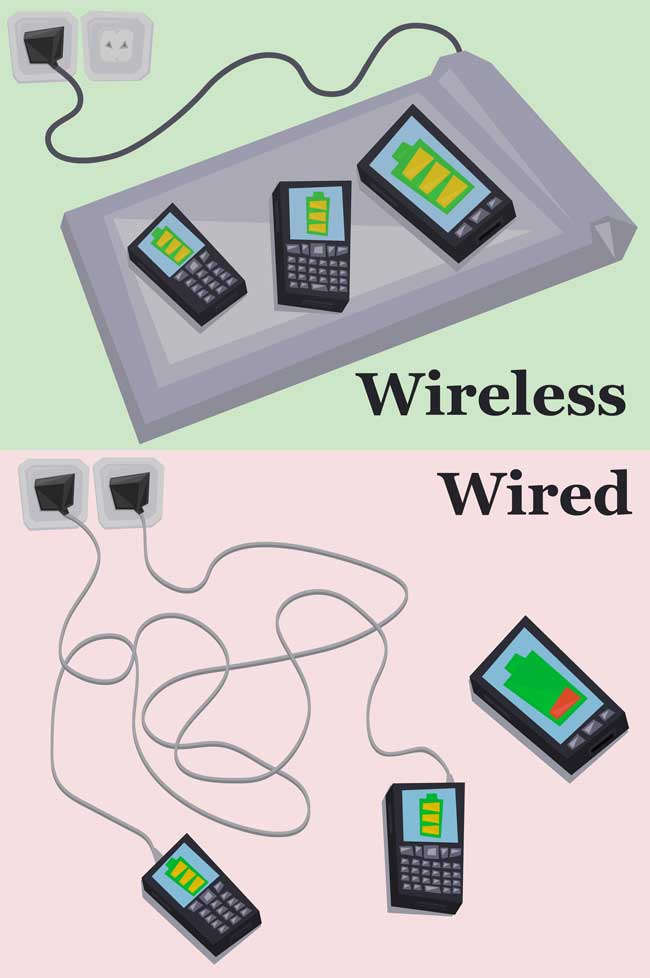Say Good Bye To Cable Clutters: Wireless Charging Is Now A Reality!

Life would be so easy, when you come down to work, place your mobile phone on the desk and it wirelessly charges itself, besides, syncing new data to your PC.
It would have been even better if you would also be able to wirelessly charge your phone on your car’s dashboard while it is playing music. In such a case, you won’t require searching for an electrical outlet whenever you are travelling.
Convenient and Less Cluttered
Wireless charging has turned out to be a desirable technology in past few years. People are willing to avoid the cable clutters and wish to wirelessly charge their devices.
With the outcome of the latest wireless technologies, people just want to do away with the inconvenience of using power cables in order to charge their phones, cameras, laptops, and other mobile devices.
Wireless Charging Methods
The most common form of wireless charging is electromagnetic induction and magnetic resonance.
Induction Charging
Most products available in the market today are designed using magnetic induction charging techniques. This requires the mobile device to be in contact with a charging surface.
In induction charging, electricity is wirelessly transferred from an external source to your mobile device, in the form of a case or clip thereby recharging your device’s battery. The only shortcoming of induction charging is that it works only over short distances.
Electromagnetic induction operates on an electromotive force. It uses two power coils - a transmitter and a receiver coil. An alternating current in the transmitter creates a magnetic field stimulating a voltage in the receiver coil.
If you have an electric toothbrush, you probably know how it works. Such type of a sealed arrangement in electric toothbrush is called inductive charging. It is a budding technology that is widely used in wireless chargers these days.
Resonance Charging
Resonance charging is also based on a similar sender/receiver coil technology as magnetic induction. However, resonance charging transmits power at a better distance. Therefore, you can charge a mobile device when placed next to a notebook with resonance charging.
Resonance charging allows a device to be a little away from the power source for charging purpose. Having a support for resonance charging in today’ gadgets will help you charge your mobile device just by keeping it close to another device with the same frequency.
Resonance charging uses two copper coils. One coil is attached to a power source (sender), while the other is attached to the device (receiver)that needs to be charged. When both coils with same electromagnetic frequency are placed close to each other, the energy is transferred between the devices.
Resonance wireless power transfer thus allows charging at greater distances as compared to inductive charging that requires close connectivity between the transmitter and receiver.
Today, laptops and other portable mobile devices which support this feature can charge themselves using magnetic induction or resonance charging. Airports, restaurants, and retail outlets may start providing this technology like they offer free WiFi today.
But, we still have to wait before we see wireless charging technology making it big and seeking a huge entry into consumer products. In the meanwhile, we can be rest assured that the technology exists and it isn’t too far from reaching us.
This post is written by Alyssa J, an employee of Integrated Device Technology, Inc., the Analog and Digital Company™ which develops system-level solutions that optimize its customers’ applications.

